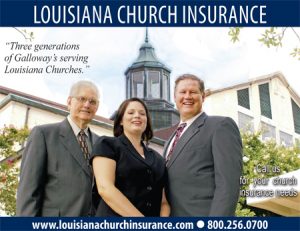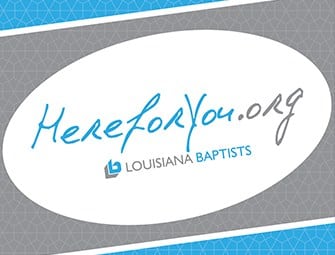By Philip Timothy, Managing Editor
LAKE CHARLES – Entire towns were wiped away. Numerous fishing villages were smashed beyond recognition. Roads were impassable. Livestock by the hundreds were left stranded. Cars and trucks floated down flooded streets and the only means of getting around was by boat.
In an area known for its fabulous seafood industry and recreational fishing, the stench of dead shrimp and fish hung in the air.
On Sept. 24, Hurricane Rita, the fourth most intense Atlantic hurricane ever recorded and the most intense tropical cyclone ever observed in the Gulf of Mexico, slammed into land between Sabine Pass, Texas, and Johnson Bayou, Louisiana, as a Category 3 hurricane with 120 mile-per-hour winds and a 17- to 20-foot storm surge that sent saltwater as far as 10 miles inland.
Yet Rita is viewed as “the Forgotten Storm” because the nation’s attention, then and now, was on Katrina, which made landfall four weeks ahead on Rita on Aug. 29.
For example, during the aftermath of Katrina, two thousand newspapers wrote more than a half of a million stories about the storm for more than two years. Rita, on the other hand, garnered national headlines for only about three days.
But Rita was devastating.
Records around the Hackberry area show wind gusts reached over 180 miles per hour as the storm made its way to land. The wind and storm surge was powerful enough to unearth more than 350 graves – sending one casket 33 miles inland – and washed away an estimated 10,000 homes and camps in four parishes, while flooding homes, schools, businesses and churches in Vermilion and Iberia Parishes with up to 10 feet of water.
UNBELIEVABLE DESTRUCTION
According to a report commissioned by the Louisiana Recovery Authority, the hurricane caused 125 deaths, most during the evacuation, and more than $12 billion dollars in damage, making Rita the ninth-costliest storm in U.S. history.
Oil platforms and drilling rigs in the storm’s path were shut down and workers evacuated which halted 98 percent of oil and natural gas production in the Gulf. Despite the precautions, 66 platforms were destroyed, 37 extensively damaged, 13 rigs were set adrift, 4 more were destroyed and 10 extensively damaged.
There was extensive damage to rice and sugar cane fields and to the hunting and shrimping industries.
Blanco and the state of Louisiana asked the federal government for $34 billion to help with storm recovery.
While touring the devastation, Maj. Gen. Bennett Landreneau, head of the Louisiana National Guard, told a reporter, “This is terrible. We did not dodge the bullet. We got smashed. Whole communities are just gone.”
Iberia Parish’s Director of Homeland Security and Emergency Preparedness in an interview with the Gainesville Sun said, “It’s bad, worse than I’ve ever seen.
After a briefing with Blanco in Baton Rouge, President George W. Bush was quoted as saying: ‘’I know the people of this state have been through a lot. We ask for God’s blessings on them and their families.’’
IT COULD HAVE BEEN WORSE
Fortunately, two days earlier, residents of Cameron Parish, Calcasieu Parish, and parts of Jefferson Davis, Acadia, Iberia, Beauregard, and Vermillion parishes were ordered to evacuate ahead of the storm by Louisiana Gov. Kathleen Blanco.
Thankfully, most did.
Cameron Parish, which was in the path of Rita’s harshest winds, was obliterated. Only concrete slabs remained where towns of Creole, Cameron, Grand Chenier, Johnson Bayou and Holly Beach once stood.
Holly Beach, affectionately known as the ‘Cajun Rivera’ because of its beautiful beaches and wonderful fishing, was gone. Only the stilts that held houses above the ground remained.
All along the roadways, from the wooded stretches of southeast Texas to central Louisiana, entire pine forests were snapped in half by the force of the winds. The highways were tangled with fallen trees and downed power lines.
MINISTERING TO THE NEEDY
Having depleted much of their resources on Katrina, the American Red Cross, the Salvation Army, state and federal officials struggled to respond to people’s needs after Rita. Army and Air National Guard units rushed to assist local police, sheriff’s deputies and fire departments who stayed behind for search and rescue.
Later, those same military units provided MREs (meals ready to eat), bottled water and ice for thousands of residents at various places cut off from the outside world because of flooding or impassable roads.
But the people of Southwest Louisiana, especially many Southern Baptist churches and SBC disaster relief teams, didn’t just wait for help to show up. Though exhausted from having spent three weeks in New Orleans and surrounding areas helping others in need, these teams, churches and their members rolled up their sleeves and went to work “bringing Jesus, a smile and a helping hand” to those who had stayed and those who were just returning to their own region.
“The thing that stands out to me, said Bert Langley, director of missions for Evangeline and Gulf Coast Associations when the storm hit, “in spite of the damage many of our churches sustained, they still continued to take in folks.
“They exemplified Christ in the midst, during and after the storm,” he said. “It would have been easy for them to say, ‘look, we’ve got our own problems’ but they didn’t. They faithfully served all those who had a great need.”
Besides the herculean efforts put forth by local churches, the Louisiana Baptist Convention led by Loy Seal, director of Louisiana’s DR effort, was ‘Johnny-on-the-spot’ and in place long before other organizations could set up.
“The convention and the North American Mission Board made a great impact on this area and our community,” said Bill Holified, pastor of First Baptist Church in Vinton at the time and now pastor of Colyell Baptist Church in Livingston. “By Thursday, when FEMA finally started arriving, we had already set up several SBC DR Teams, the Red Cross and NAMB teams at our church. The feeding team came out of the Arkansas Baptist Convention, and they came with their own chainsaw teams.”
Chainsaw teams showed up from Kansas, North Carolina, Pennsylvania, Texas, Tennessee, Florida and Alabama by the following weekend along with more than 75 Baptist Student Union volunteers from Ouachita Baptist University in Arkadelphia, Ark.
“I worked closely with Tennessee and Alabama,” said Butch Guidry, the ‘Blue Hat’ from the Carey Baptist Association, “and they will always have a special place in my heart. The way they served and their heart for people made all the difference to people who were hurting and in desperate need after the storm.”
Maplewood Baptist Church in Sulphur, Topsy Baptist Church in Lake Charles, First Sulphur, and First Westlake became major command centers for disaster relief.
The parking lot at East Bayou Baptist Church in Lafayette turned into a major site for disaster relief and a Texas feeding unit produced almost 15,000 meals a day at the Lafayette Cajundome.
First Lafayette housed the doctors and nurses who treated all those staying at Cajundome as well as many of the Southern Baptist relief workers.
Others – churches, pastors, and church members – opened up their places of worship and homes to house and feed evacuees and relief workers.
The 10 Baptist encampments in the state played a huge role in taking care of evacuees. Dry Creek Baptist Camp and Acadian Baptist Center were two of Louisiana’s encampments which bore the brunt of Rita’s fury.
Even though they both sustained damage, lost electricity, water and sewer, the two camps continued to minister to evacuees. ABC, which was further east, was able to house more than 400 and provided Dry Creek with assistance in the form of a trailer filled with air conditioners and generators.
“It was an incredible time of ministry,” said Todd Burnaman, director of Dry Creek. “It was the pinnacle of ministry for us. Rita changed our lives, made us stronger and better. It taught us how to do hurricane ministry.”
Town helping town; stranger helping stranger; neighbor helping neighbor; church helping church, people and denominations set aside their own needs to care and minister to others.
As Langley said, “We were being Jesus. Our churches exemplified Christ in the midst of the storm.”
RITA AMNESIA?
Many of the people The Baptist Message interviewed expressed their sincere gratefulness to Southern Baptists and the way they responded during those trying times.
There was also a hint of resentment because many felt as if they had been forgotten. They said at the time they weren’t looking for handouts, just some recognition from the outside world that, yes, a big hurricane hit them too.
In an interview with FoxNews, Brett Downer, editor of the Lake Charles American Press, summed up the feelings of many when he said, “It’s called ‘Rita amnesia’ around here. There were a lot of well-meaning folks and organizations that call this area asking us how we did after Katrina. Of course, we were untouched [by that hurricane].
“[Rita is] really considered a forgotten storm,” Downer continued. “As far as the damage, though, it’s unprecedented. Had there not been a Katrina, Hurricane Rita would have probably dominated the news.”
“These are the heartiest, most resilient folks I know. They still view where they live as their version of paradise,” said Mark Davis, executive director of the Coalition to Restore Costal Louisiana. “You sit with them long enough and you would have to agree.”
The Message hopes this compilation of stories and photos – a broad stroke, so to speak – will help people realize the severity of Rita, the magnificent work of Southern Baptist members, churches and entities and how many seeds were planted because of this incredible outpouring of kindness and ministry.



